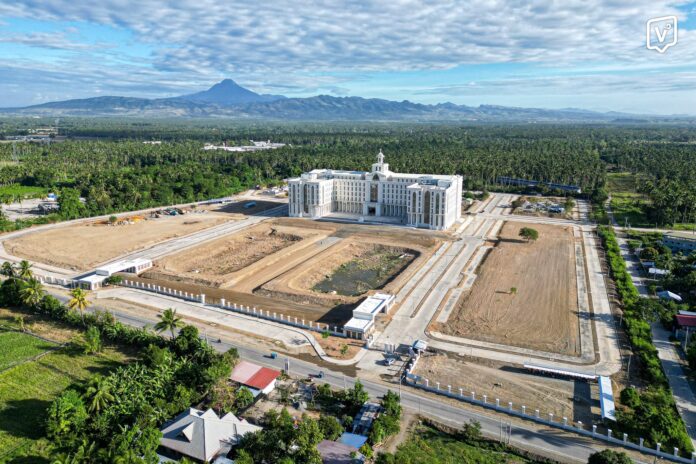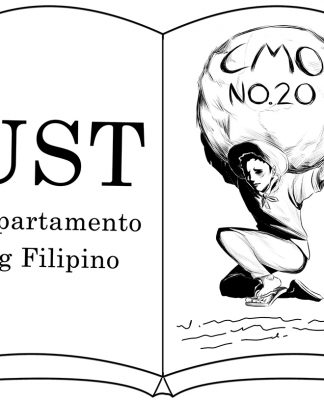
GENERAL SANTOS CITY – Filipino Dominicans inaugurated the largest of the UST campuses in General Santos City on April 11, bringing “Thomasian quality of education” to southern Philippines.
In its maiden academic year, the Mindanao branch campus will offer five programs under three pioneering schools: the School of Health Sciences, School of Business and Accountancy, and School of Engineering and Information Technology.
UST Rector Fr. Richard Ang, O.P., in his speech at the inauguration, emphasized the importance of the expansion to UST as the Mindanao branch is the first campus outside Manila and Luzon.
“We stand in the majesty of a structure that not only represents bricks and mortars but embodies UST’s rich history, values, and aspirations,” Ang said.
“This structure is a symbol of faith in God, a beacon of hope for the region and the country, and unity and cooperation amid plurality,” he added. “This is a place for interreligious and interfaith dialogue.”
Ang concelebrated the Mass at the start of the ceremonies alongside Bishop Cerilo Casicas of the Diocese of Marbel, Prior Provincial Fr. Filemon de la Cruz, O.P., and other Dominican priests.
They also blessed the UST GenSan Main Building, the only completed school building on the 82.2-hectare campus to date. This building was modeled after the similarly named structure designed by Fr. Roque Ruaño, O.P. in 1927 at UST Manila.
The seven-story Main Building of GenSan can accommodate up to 5,000 students and features 24 classrooms, 23 laboratories, a chapel, library, clinic, auditorium, cafeteria, organization rooms, and function halls.
Other areas of the branch campus have also been developed for future structures. These include the site designated for the UST-Dr. Ricardo S. Po Sr. Integrated Innovation and Research Laboratories, detention ponds to mitigate floods, and a botanical garden.
The GenSan campus is twice the size of 40-hectare UST Santa Rosa, the research hub in Laguna where the first building was inaugurated last year, and four times the size of the 21-hectare main campus in Sampaloc, Manila.
James Liong, owner of AIMM Builder & Construction Supply Inc., the contractor of UST GenSan, told the Varsitarian that the total cost for land development and construction of the Main Building came in under the initial budget of P2 billion.
Despite integrating hints of Mindanaoan identity, Facilities and Management Office Director Fr. Dexter Austria, O.P. said the edifice remained in line with the Thomasian identity.
“It is a true landmark that will set the City of GenSan in the educational and cultural map of the Philippines,” Austria said.
“The galleons have ducked the anchors; the tigers have entered their lair, and we are here to stay.”
De la Cruz said the expansion to GenSan signaled the growth of the Dominican Province of the Philippines, which took over the administration of UST from the Holy Rosary missionary province of Spain.
‘Hub of knowledge creation and research’
Apart from UST officials, local government administrators and Commission on Higher Education (CHed) regional representatives were also present at the inauguration.
GenSan Mayor Lorelie Pacquiao lauded the establishment of the branch campus in her remarks, describing it as an expansion that was mutually beneficial for UST and GenSan.
“Mapapabilang na ngayon ang UST sa mga pundasyong magpapa-unlad sa GenSan bilang tahanan ng mga kampeon,” Pacquiao said. “Ang inyong pagdating dito sa lungsod ng GenSan ay magiging simbolo ng katuparan ng mga pangarap, pag-asa, determinasyon, na patuloy nating binubuhos para sa ating kinabukasan.”
CHEd Region 12 Director Nelia Abilin underscored the value of establishing educational institutions capable of research in GenSan, as these could produce a skilled workforce and knowledge in regional industries.
“Higher education institutions are not only centers of learning but also catalysts for regional progress,” Abilin said. “They play a crucial role in promoting regional economic growth. Their impact extends beyond campus boundaries, shaping economies, societies, and cultures in the regions they serve.”
“We hope that the UST GenSan campus will be a hub for knowledge creation and research,” she added.
Some 500 students are eyed to be accommodated in the first year of the branch campus, who may enroll under the five pioneering progams: pharmacy, medical technology, entrepreneurship, accounting information systems, and industrial engineering.
Maribel Nonato, assistant to the Rector for UST GenSan, told the Varsitarian that the University was anticipating CHEd’s approval for the program offerings, as the commission had already given UST GenSan the green light to promote and market its programs.
Dominicans acquired the land on which UST GenSan stands in 1997 and began to develop it in 2018. In 2021, the GenSan Main Building was topped off.
The inauguration marked the end of UST’s activities set to drumbeat the opening, which included the blessing of the campus chapel and botanical garden site and an outreach program with a Muslim community. with reports from Hannah Joyce V. Andaya and Mabel Anne B. Cardinez

















